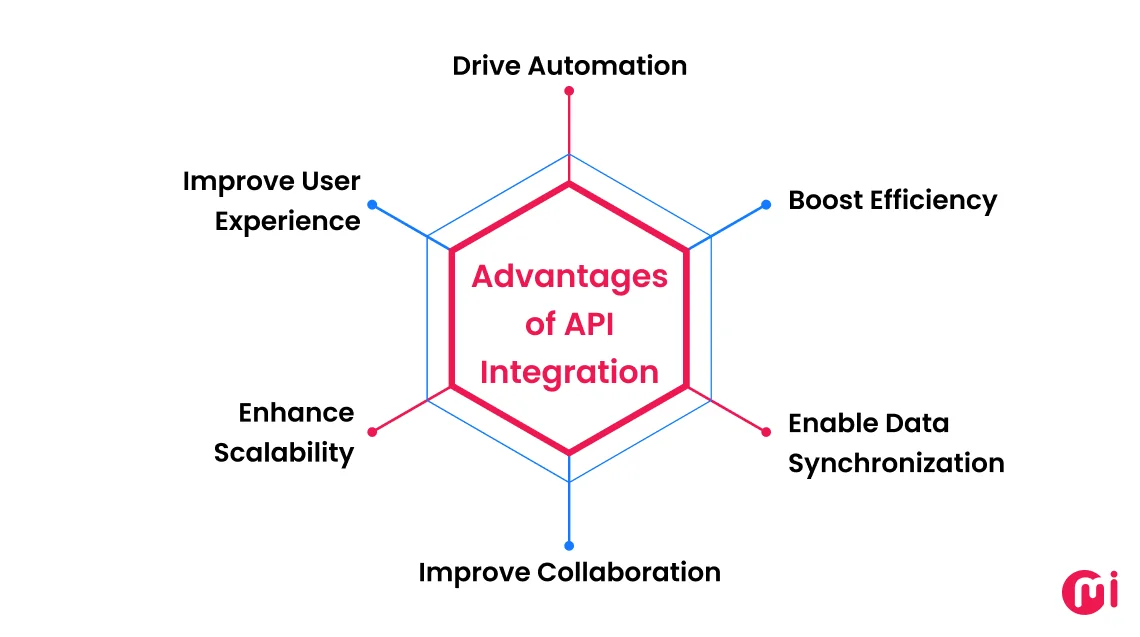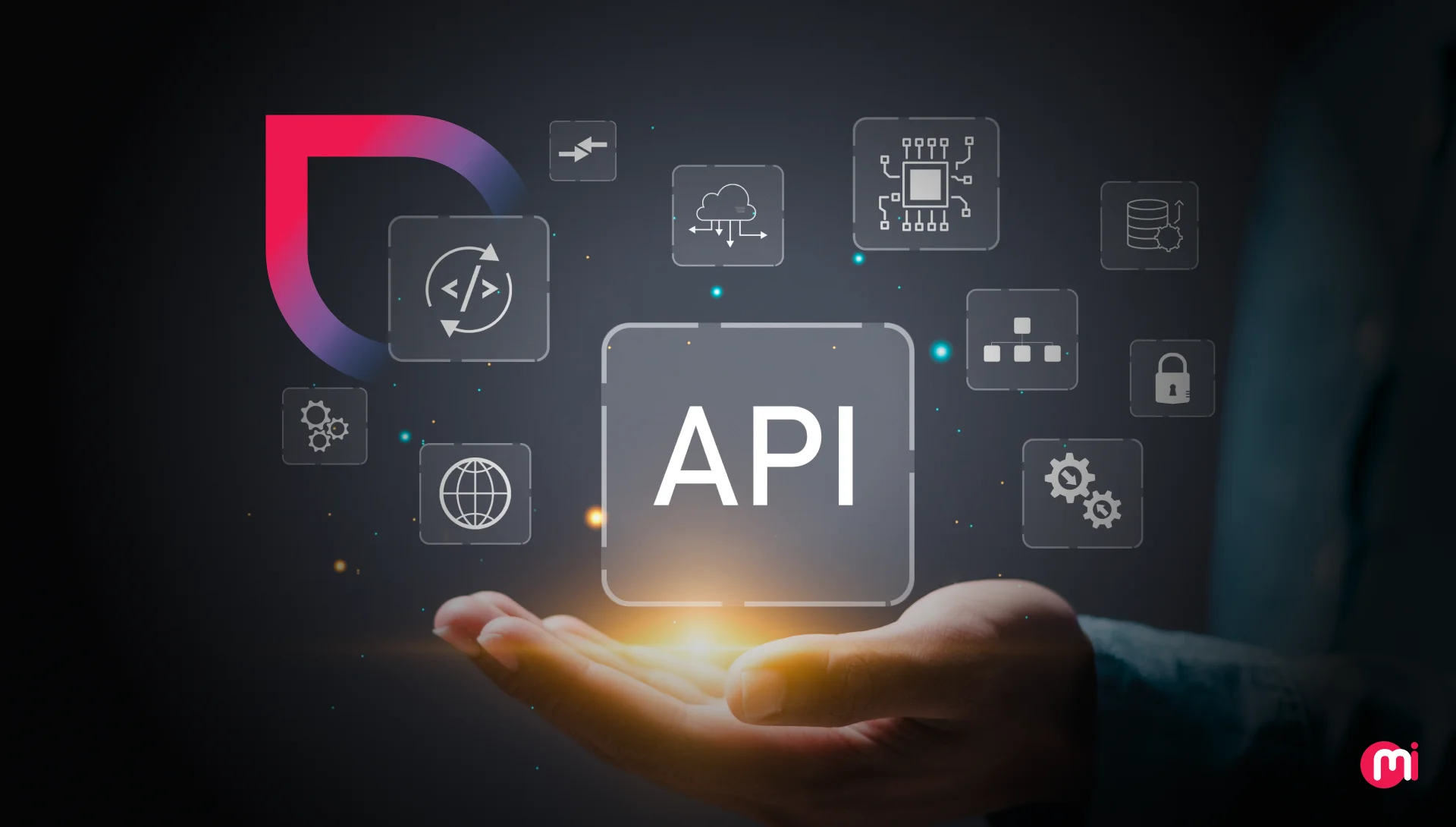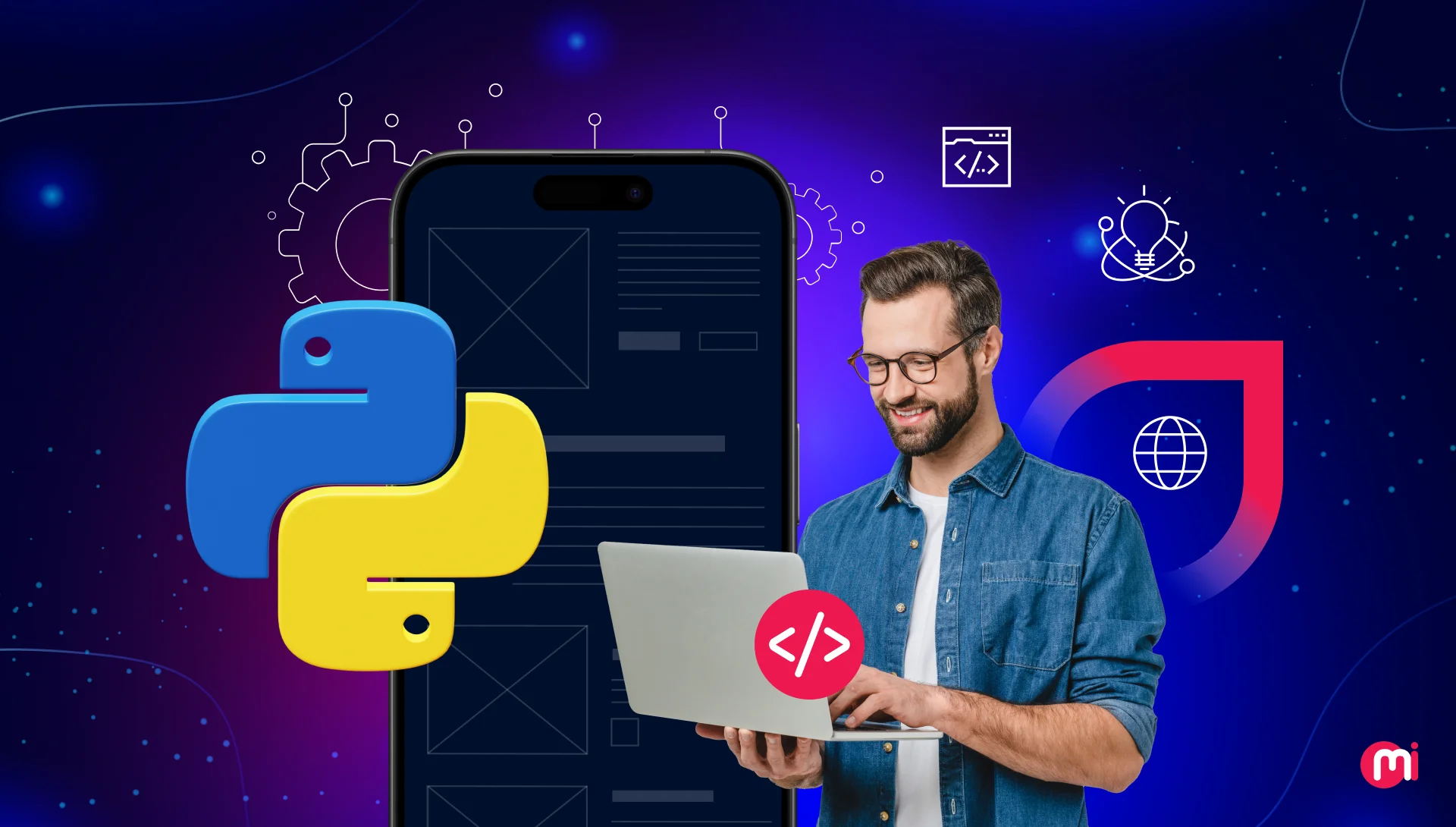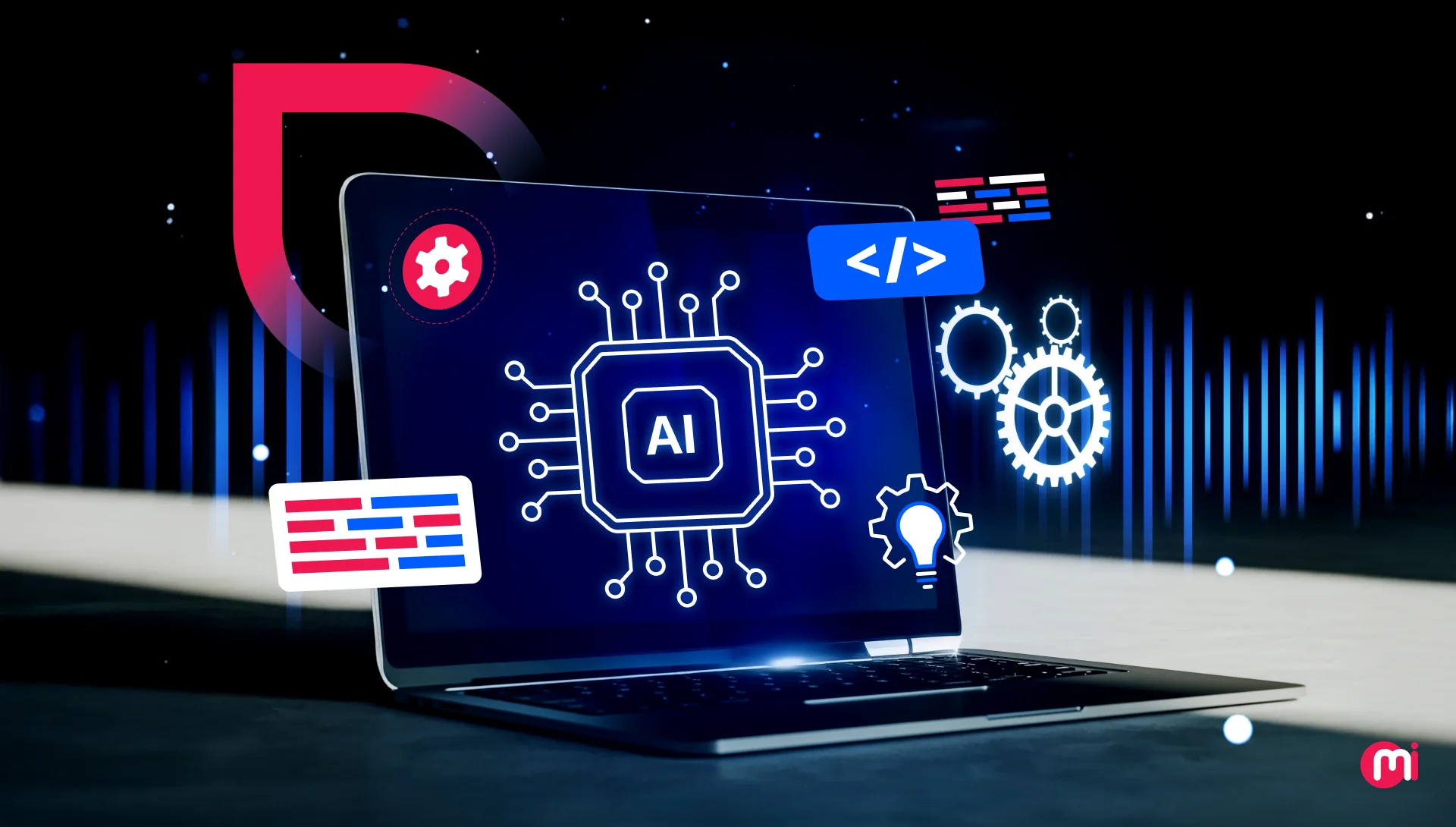The Ultimate Guide to API Integration: Benefits, Types, and Best Practices
- Web
- July 25, 2025
74% of organizations have already shifted from a code-first to an API-first approach, emphasizing the gradual shift in defining the API integration strategies, or contracts and designs, even before starting with the development of software. If you are still getting started with adopting the API-first approach, you are not alone. This blog post provides you with insights into everything that you need to understand about API integration, including its types, benefits, industry-specific use cases, real-world examples, best practices, and more.
In today’s hyper-connected, digital-first world, “integration” is no longer a luxury; it’s a necessity. If you’re a decision maker exploring how to streamline operations, eliminate silos, or enable scalable growth, you’ve likely come across the term API integration. But what exactly does it mean? More importantly, how can leveraging API development services help your organization move faster, reduce manual work, and stay competitive?
This guide breaks down what API integration really is, the types that matter, how much it can cost, who’s using it successfully, and the best practices you need to know before making any decision. Whether you’re planning a digital transformation, scaling operations, or just tired of siloed systems, you’re in the right place.

What is API Integration?
API integration is the process of connecting two or more software applications using their APIs to enable them to communicate and share data. It allows systems to work together seamlessly, automating processes, improving efficiency, creating a unified user experience, and enhancing functionality without manual intervention or needing to know the underlying complexity of the system.
What Are the Benefits of API Integration?
The benefits of API integration include seamless data sharing, improved efficiency through automation, reduced manual errors, faster development, and enhanced scalability. It also enables better user experiences by connecting different services, supports real-time updates, and allows businesses to integrate third-party tools and expand their digital capabilities easily.

Let’s understand these benefits in detail:
1. Drive Automation
Ever had to copy data from one app to another manually? Total waste of time. APIs handle it better. Once they’re set up, you don’t really think about them; things just happen behind the scenes. Less clicking, less hassle, and fewer mistakes.
2. Boost Efficiency
Waiting on approvals or syncing systems manually? APIs let software handle those parts. So if your sales platform needs to update inventory or your support tool pulls customer info, it just does.
3. Enable Data Synchronization
There’s nothing worse than looking at two dashboards and getting two different answers. APIs fix that. They sync everything across your tools so your CRM, your reports, and your analytics all tell the same story.
4. Improve Collaboration
We used to rely on screenshots and email threads. Now? With APIs tying systems (like CRMs, ERP, etc.) together, everyone’s working off the same info in real time.
5. Enhance Scalability
Need to add a new tool or switch to a different system? APIs make it that much easier. They let you build in a modular way, kind of like LEGO blocks, so your tech setup can grow as your business does.
6. Improve User Experience
From seamless single sign-on to third-party integrations, APIs enable a cohesive user experience. Internally, well-documented APIs empower dev teams to build faster and reduce onboarding time.
Types of API Integration
The types of API integration include Public (or Open) APIs, Private (or Internal) APIs, Partner APIs, and Composite APIs based on the intended use. Apart from it, based on distinct protocols and architectural styles, the types of API integrations are REST APIs, SOAP APIs, RPC APIs, and more.
Here is a more detailed look at the types of API integration:
Types of API Integration by Accessibility/Intended Use:
1. Public APIs
Also known as open or external APIs, public APIs are the application programming interfaces that are made accessible to the general public, including external developers and third parties.
Companies offering software development services can leverage these APIs to integrate the system’s data or functionality into the application they develop, either for free or at minimal cost.
Examples of public APIs: OpenWeatherMap, Shopify API, Google Translate API, NASA APIs, and more.
2. Partner APIs
Unlike the public APIs, partner APIs are only made accessible to selected external partners, typically through B2B partnerships, co-branded services, or joint ventures. Access is typically managed via contracts, API keys, or dedicated authentication flows.
Amazon’s selling partner API is one of the examples of partner APIs that are designed to allow the third-party sellers to manage inventory, process orders, and handle shipping through the Amazon platform.
3. Internal APIs
As the name suggests, the “internal” APIs are designed to enable the communication and data exchange among the various software within the same organization.
In the previous, both types of APIs were shared with external partners; internal APIs are used strictly within an organization.
Examples of internal APIs are microservices communication APIs, authentication and authorization APIs, analytics and reporting APIs, and more.
4. Composite APIs
A composite API is a design approach in which API developers combine multiple endpoints or services into a single API call. They bundle a series of related operations into one request. Hence, they reduce the number of API calls, improve efficiency, and are ideal for complex workflows and orchestration.
Examples of composite APIs are CRM systems pulling customer details, transaction history, and preferences in one call.
Types of API Integration by Protocol/Architecture:
1. REST APIs
REST (Representational State Transfer) is the most widely used architectural style for API design. It leverages standard HTTP methods such as GET, POST, PUT, and DELETE to perform operations on resources identified by URLs. RESTful APIs are stateless, meaning each request from the client to the server must contain all necessary information.
REST APIs are widely used for facilitating data exchange, building web APIs, connecting microservices, accessing digital resources, integrating cloud services (AWS, Azure, and Google Cloud), and more.
2. SOAP APIs
SOAP (Simple Object Access Protocol) is a protocol-based API standard that relies on XML for its message format and typically uses HTTP or SMTP for message negotiation and transmission. It’s known for its strict rules and high level of security, making it popular in enterprise and financial sectors.
While more rigid than REST, SOAP is still a top choice in industries requiring strict standards and compliance. Financial institutions, such as banks and insurance companies, use SOAP for secure transactions and customer identity verification. Enterprise software platforms often depend on SOAP for system-to-system communication.
3. RPC APIs
RPC (Remote Procedure Call) APIs are designed to execute functions or procedures on another system (server) as if it were a local procedure. It’s essentially a way to make remote function calls appear as if they’re happening within the same application.
These APIs are efficient for internal microservices architecture, where performance and direct functionality matter more than resource abstraction. RPC APIs are widely used in distributed systems and in low-latency systems like trading platforms or command-driven enterprise tools. They’re also a good fit for enabling real-time data processing, especially in IoT devices.
Modern frameworks like FastAPI make API integration faster, more secure, and easier to scale. If you’re building high-performance applications with Python, it’s smart to hire FastAPI developer who can design efficient APIs and implement reliable integrations.
The Cost of API Integration
How Much Does an API Integration Cost?
The cost of API integration is around $2,000 – $5,000, while complex, customized integrations can exceed $30,000 depending on various factors.
The factors influencing the cost of API integration are:
- Complexity of the API integration
- Scope of the API integration
- Time and expertise required to deploy and test the API integrations
- API charge per usage in case of subscription fees or licensing costs (if applicable)
- Integration platform costs
- Level of customization
- Infrastructure requirements
Explore the ultimate guide to API development.
Popular Examples of API Integration
The examples of API integrations include using APIs to integrate payment gateways, CRM systems, social media platforms, shipping services, weather apps, and more.
Let’s explore some of the popular API integration examples in detail.
1. Cloud Service Integration
Cloud APIs allow businesses to connect their applications with popular cloud platforms such as AWS, Google Cloud, and Microsoft Azure. These integrations typically manage storage, compute, AI services, and infrastructure.
So if a company offering cloud integration services wants to use AWS S3 for uploading and retrieving the user files for your web app, they can do it by integrating AWS S3 using AWS SDK and RESTful APIs.
To learn more about cloud integration, explore our guide on what is cloud integration, its benefits, challenges, and business impact.
2. Enterprise Software Integration
An enterprise’s digital ecosystem comprises multiple software systems like CRM, ERP, and more, sharing data and collaborating in real time. APIs are used with either custom or provided by the B2B SaaS application used by the enterprises to integrate them into internal workflows to streamline operations.
For example, to automatically sync contact data and service tickets, Software Integration enables the CRM to connect seamlessly with the internal customer service portal using REST APIs.
Learn more about how businesses can achieve seamless B2B SaaS integration.
3. Chatbot API Integration
Chatbot APIs enable developers to embed conversational agents into applications or platforms, improving customer service and user engagement.

4. Payment Gateway Integration
To facilitate payment processing into the application requires security, given the involvement of the customer data that is highly sensitive. This is where the third-party payment platforms come in, like Stripe, Square, PayPal, and more, which offer the APIs for payment gateway integration. These APIs are designed to facilitate secure transactions, as they are in compliance with PCI-DSS.
Basically, if you want to integrate Apple Pay into the iOS app, especially for a web app, you can use the Apple Pay JS API and the Payment Request API for web integration.
5. Social Media Integration
Whether to facilitate the automated content posting on social media platforms or retrieve the information of the social media analytics, social media platforms like Meta, LinkedIn, X, and more offer APIs for seamless integration into software of your choice.
The marketing team uses social media APIs from platforms like Instagram, Facebook, and YouTube, which provide endpoints for retrieving analytics data and display the real-time metrics like likes, shares, comments, followers, and more in the dashboard.
Use Cases for API Integration By Industry
Across industries like healthcare, finance, retail, and more, API integration is used to streamline operations, improve user experiences, enable real-time data access, and more.
Here are the industry-specific use cases of API integration:
1. Healthcare
In healthcare solutions, API integrations facilitate real-time and secure data exchange, remote patient monitoring, telehealth, personalized medicine, and data analytics and reporting.
The simplest yet most widely recognized and implemented use case of API integrations in healthcare is real-time data exchange, facilitated by the integration of telehealth software with the EHR system. This ensures that the application requesting the patient data from EHR gets the up-to-date and comprehensive patient records.
Further, the integration of EHR with the analytics software allows the authorized healthcare providers to also identify disease patterns and even optimize the treatment process.
APIs become instrumental in overcoming interoperability issues in healthcare by enabling the secure data exchange and collaboration of healthcare systems beyond geographical barriers.
Learn more about interoperability in healthcare.
2. Finance
Finance solutions seem to need a wide range of API integration in order to facilitate authentication, KYC, real-time payment transactions, fraud detection, assessment of borrowing eligibility for loans, automated invoice reconciliation, and more.
One of the critical use cases of API integration in the finance industry is to enable investors to buy or sell their investments in a risk-aware investment platform. Apex API integration is used for enabling quick trade execution in these platforms. These platforms also have payment gateway APIs like Stripe integrated to enable all payment transactions for buying and selling investment assets on the platforms.
Last but not least, for retrieving and linking the investor’s banking details into the investment platform, Plaid API integration is used. All these APIs make the entire process of investment frictionless for the users.

3. Education
An education solution consists of an ecosystem of solutions, including a learning management system (LMS), student information systems (SIS), and other tools to offer a learner a very cohesive learning experience. API integrations help to streamline data management across these tools in order to enhance the learning experience, improve administrative efficiency, and even facilitate remote learning.
There are various popular education APIs as well, like Google Classroom API, Microsoft Graph Education API, and more that enhance the functionalities of an e-learning platform.
API Integration Best Practices To Adopt
From securing APIs to versioning, implementing error handling, logging and monitoring activity, testing thoroughly, and more, here are some of the highly effective best practices that help ensure smoother, more secure, and scalable API integrations.
1. Review API Documentation Thoroughly
API documentation helps you understand the API’s functionalities, limitations, rate limits, authentication methods, error handling, and more. Reviewing the API documentation helps you to understand these aspects. Make sure to pay close attention to versioning, deprecation notices, and required parameters.
2. Choose Reliable and Well-Maintained APIs
You can opt for the APIs from reputable providers with a proven track record of offering stable and secure APIs. Further, also consider evaluating the API providers you shortlist based on the uptime guarantees, support responsiveness, community feedback, and update frequency. Last but not least, check for SLAs (service-level agreements) and proper versioning support.
3. Ensure Security
APIs often handle sensitive data; hence, prioritizing adopting security best practices from the start is the wisest thing to do. Begin with implementing robust syndication mechanisms like OAuth 2.0 or other secure authentication methods.
Consider protecting the API keys/tokens also with appropriate security measures. Apart from it, you can also consider using API gateways for access control, rate limiting, API validation, sanitization, monitoring, and more.
4. Plan for Scalability
To ensure building a scalable API, consider adopting a microservices architecture so the independent service in the application has its own APIs. Further, implement caching strategies to reduce unnecessary API calls. Consider implementing API rate limiting and throttling to prevent API abuse.
Use load balancing to ensure that your APIs can support high availability even for thousands or millions of years. Next, to reduce the latency and improve the response time, use chasing. Last but not least, enable API versioning to allow backward compatibility in case changes are to be made to your APIs.
5. Using SDKs and Pre-Built Templates
As far as simplification of integration and reducing the development time are concerned, consider using official SDKs or libraries. Further, to accelerate the setup and promote consistency across projects, use pre-built templates and code samples. These SDKs and templates offer prepackaged code and preconfigured structures for common tasks and interaction specifications, respectively.
Learn the best practices to follow for REST API development.
Final Thoughts on API Integration
In a world where speed, automation, and seamless user experience are critical, API integration isn’t just a technical aspect; it’s a business enabler. Whether you’re trying to connect your internal tools, offer better services to customers, or scale your digital product, smart API integration can unlock serious value.
But it’s also complex, and getting it wrong can lead to delays, broken systems, and missed opportunities. That’s why working with the right partner matters.
At MindInventory, we help businesses build secure, scalable, and future-proof APIs backed by years of real-world experience across industries. If you’re looking to leverage services like API automation, API management, API integration, E2E API implementation, and API as a service (APIaaS), we’re here to help.
FAQs on API Integration
The full form of API is Application Programming Interface.
Mainly, there are four types of API integrations, namely internal (or private), partner, public (or open), and composite. Additionally, APIs are also categorized by their architectural style and protocol, such as REST, RPC, GraphQL, and more.
Also known as bidirectional integration, two-way API integration is the process by which the two integrated applications can share data with each other in both directions simultaneously. Hence, data across the integrated apps remains consistent as they are updated simultaneously in real time.
The API integration and application integration are related, yet different concepts. API integration is a mechanism that is designed to enable connecting and exchanging data between applications, like using a quick commerce platform using a payment gateway API to enable transaction processing.
On the other hand, application integration is a process of connecting and integrating different applications in an organizational digital ecosystem, like integrating a CRM system with accounting software.
API integration methods are different ways in which the software connects and exchanges data using APIs. The common API methods are GET, POST, PUT, PATCH, and DELETE.
An API protocol is a set of rules that define how software components communicate with each other over a network. It specifies how requests are made, how data is formatted, and how responses are returned. Common API protocols include REST, GraphQL, WebSocket, and SOAP, each serving different purposes and offering varying levels of complexity and performance.
API-first integration is a development approach where APIs are designed and built before implementing the underlying application or service. This ensures that the API serves as a consistent, reusable interface for different systems to interact with, promoting scalability, faster development, and easier integration across platforms.
API level integration refers to the process of connecting different software systems or components through their application programming interfaces (APIs). This allows them to communicate, share data, and perform functions seamlessly without needing direct access to each other’s code, enabling automation, interoperability, and efficient data exchange.
To identify the API type, examine how the API communicates and exchanges data. Common types include REST (uses HTTP methods and JSON), SOAP (uses XML and strict protocols), GraphQL (allows flexible data queries), and gRPC (uses Protocol Buffers and is ideal for high-performance needs). You can usually find this information in the API documentation or by analyzing the request and response formats.
An API gateway is a server that acts as a single entry point between clients and backend services. It manages API requests by handling tasks like routing, authentication, rate limiting, load balancing, and logging. This simplifies client interactions with multiple services and enhances security, performance, and scalability.
An API (Application Programming Interface) is a set of rules that allows different software systems to communicate with each other. Integration, on the other hand, is the process of connecting two or more systems so they work together. APIs are often used as tools or methods to enable these integrations by facilitating data exchange and functionality sharing between systems.













